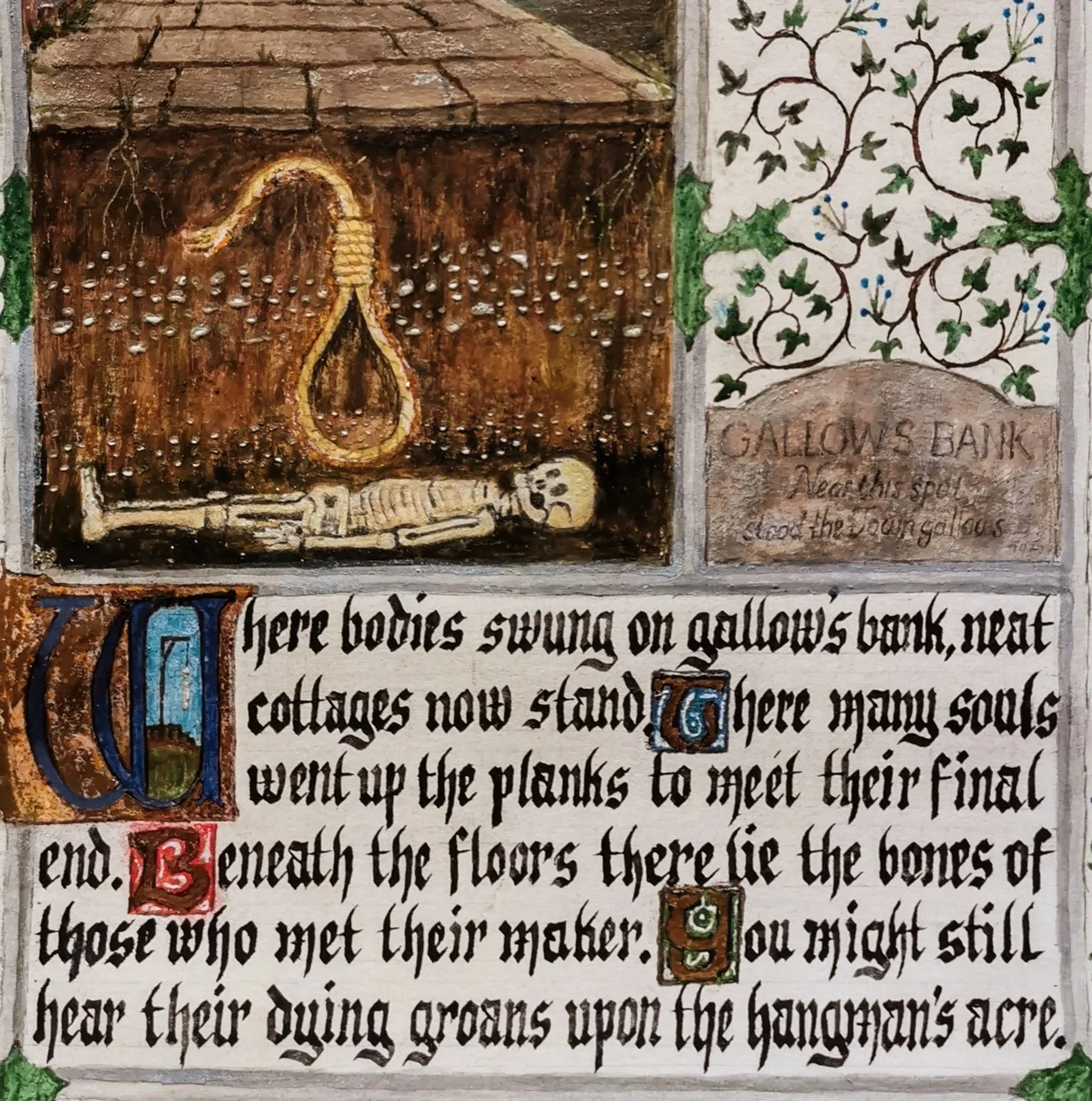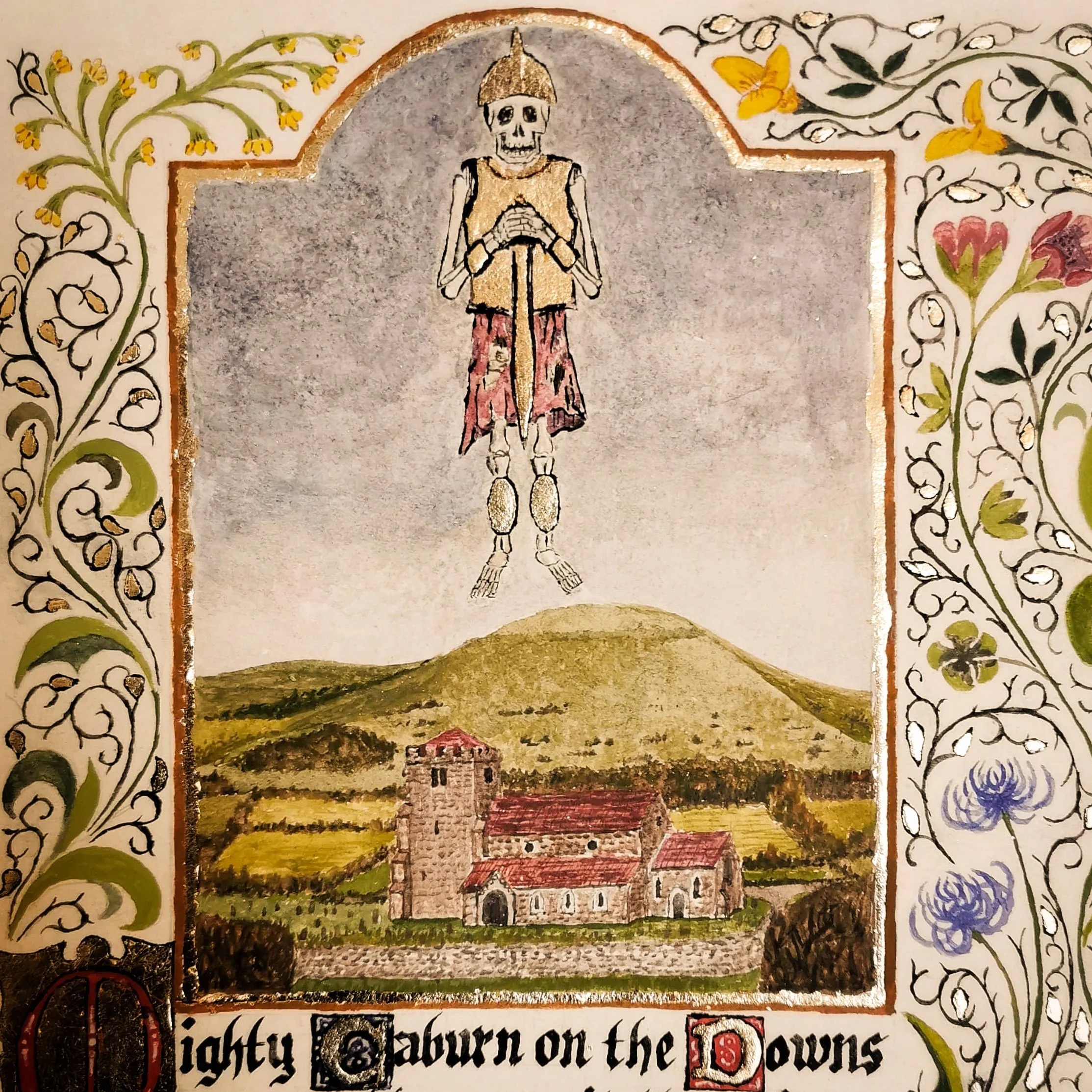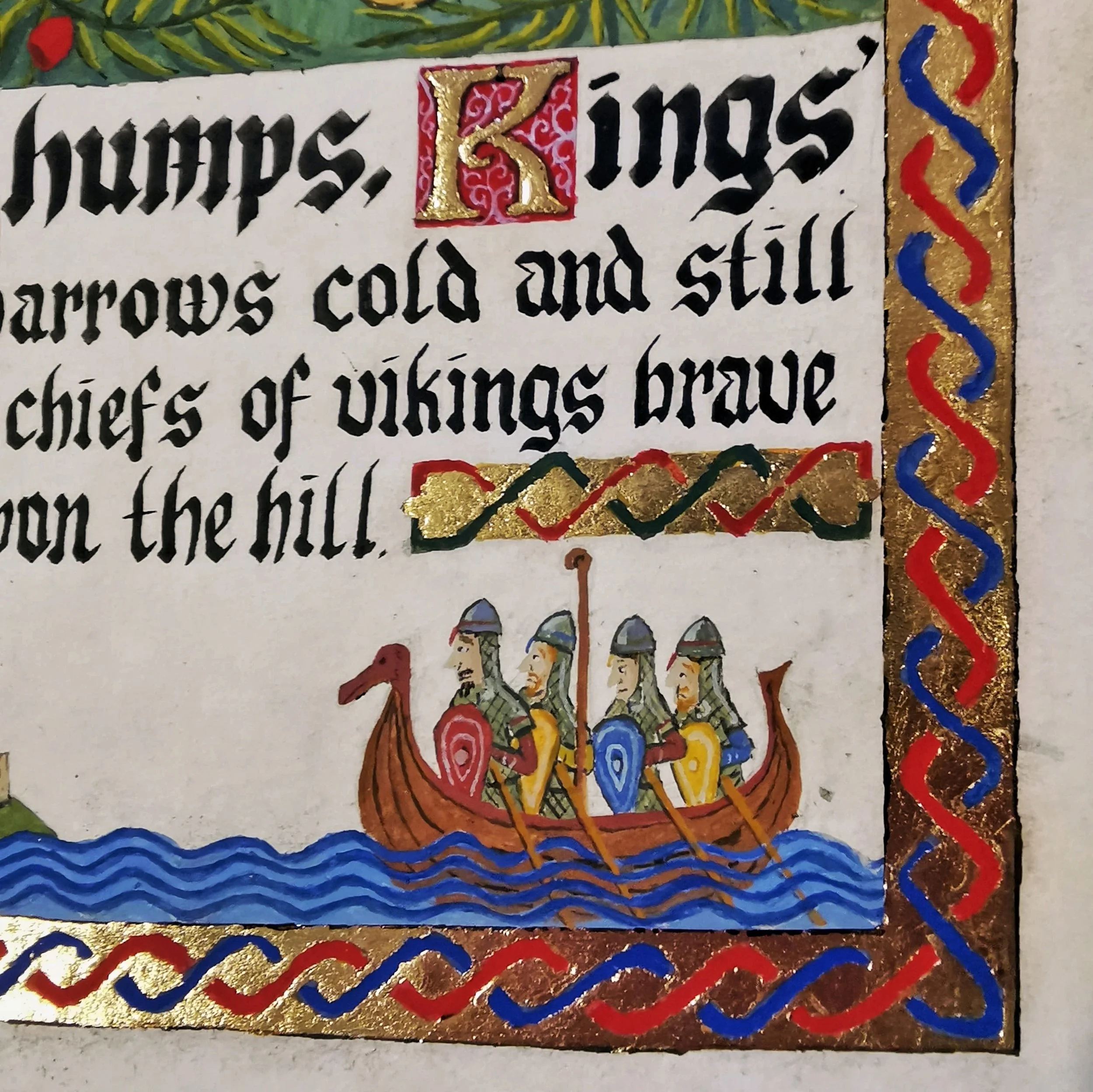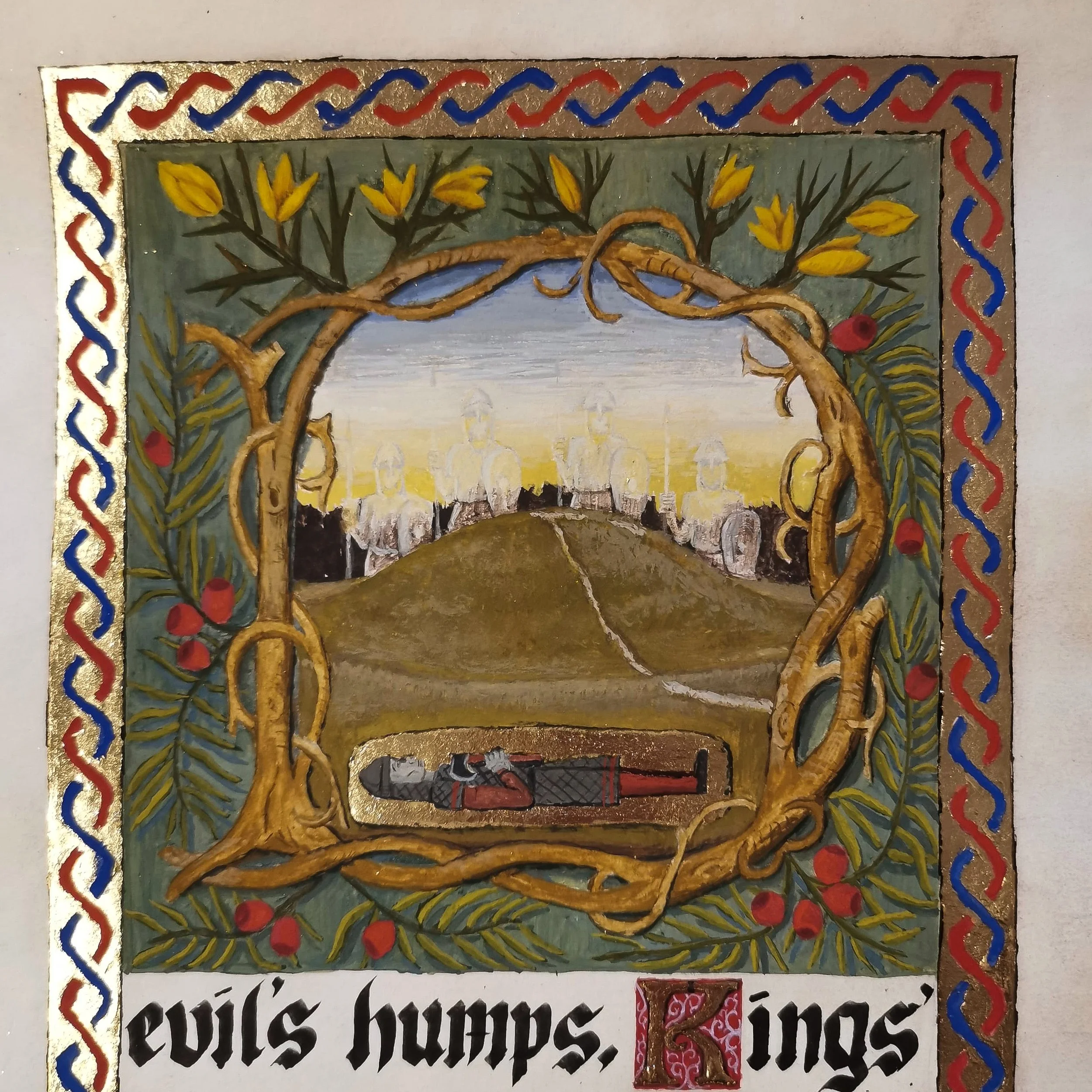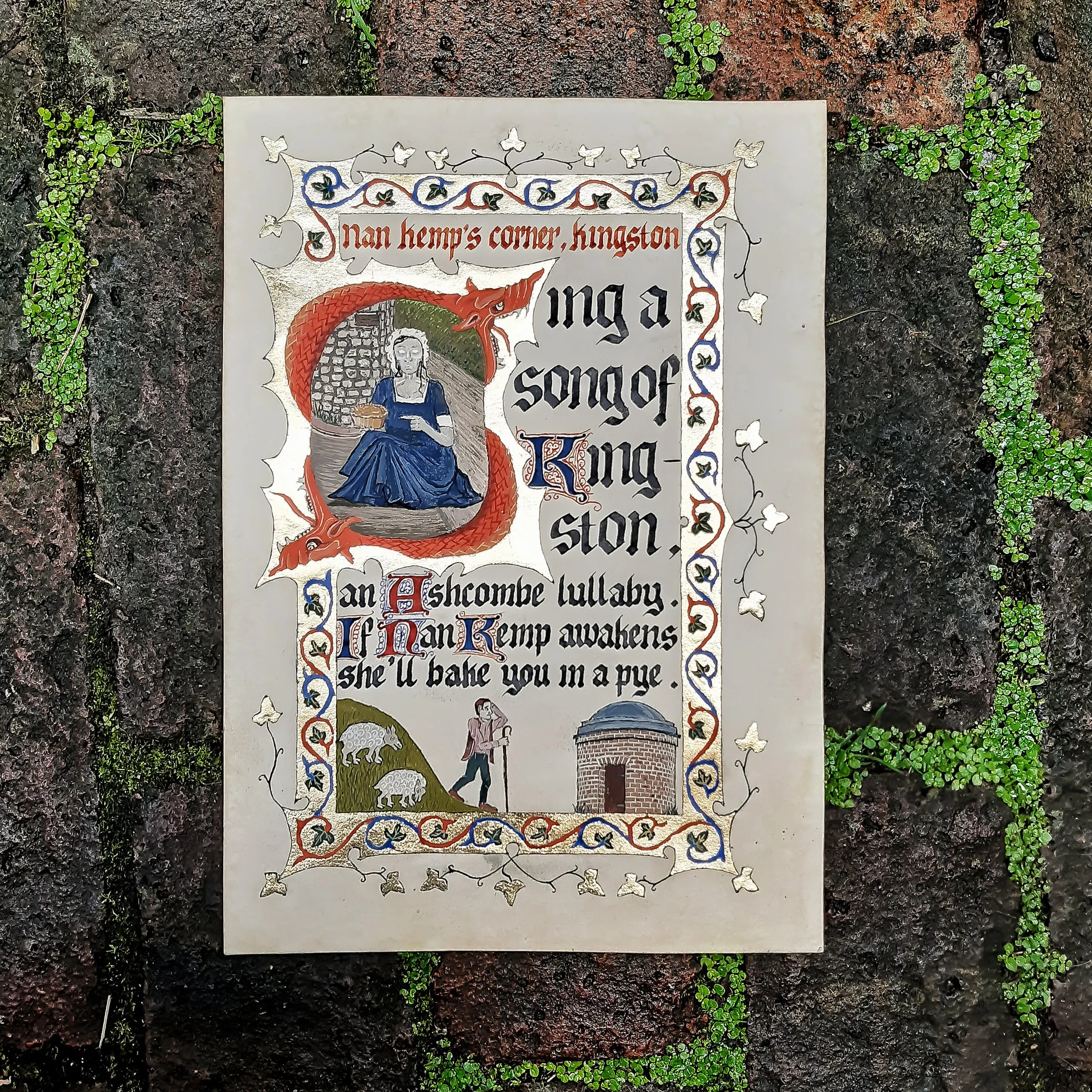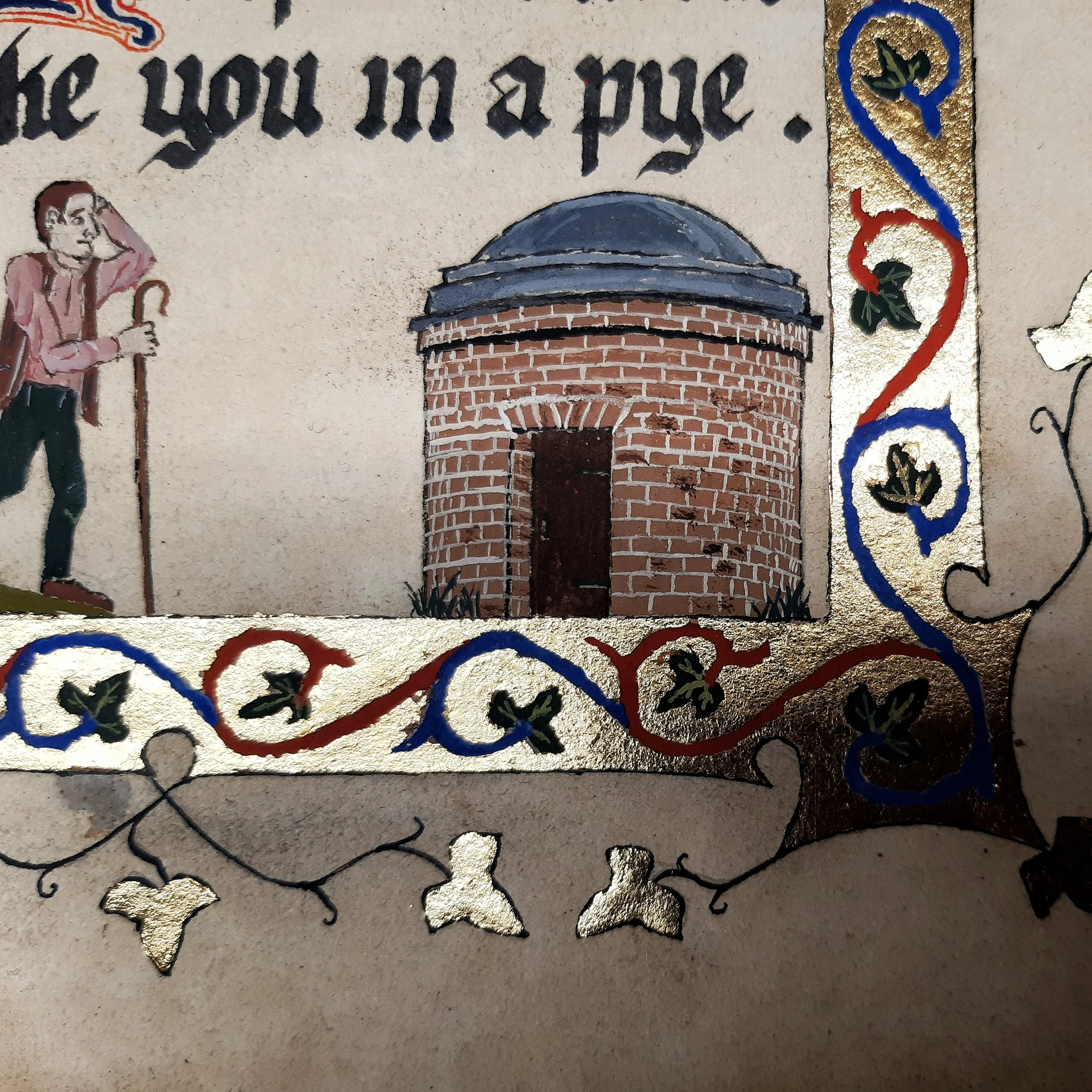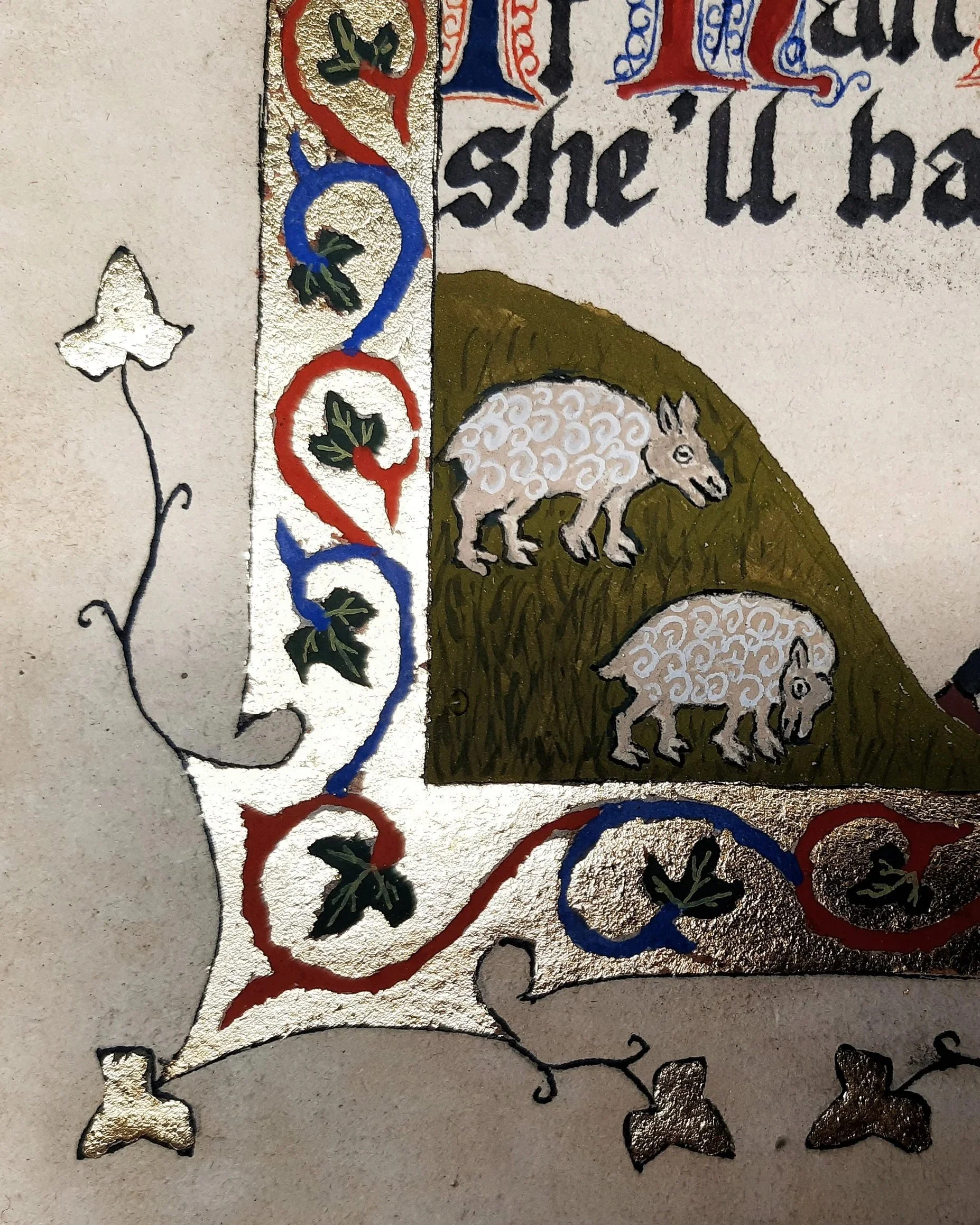
Strange News from Sussex grew out of my love for folklore and the landscape of the South Downs. Sussex is covered in historic sites, incredible nature, and legends that are almost forgotten.
Every work in this series starts with finding a story. I then write a few lines to capture its essence, and use existing mediaeval books as inspiration for the illustrations and margins.
If you know of a piece of lore that has not yet made the collection, get in touch! I would love to hear from you.
The Devil’s Dyke
Like so many features in the British landscape, this striking valley just northwest of Brighton was the work of the Devil himself! This perhaps is the most famous folk story in all of Sussex - My take on it draws on Medieval depictions of the devil, and on a 1970s folk horror classic.
The story goes that the Devil was furious about the amount of churches in Sussex, so he decided to dig a channel through the Downs in a single night, to let in the sea and drown them all.
An old woman (or sometimes St Dunstan!) saw him at his work, and used a candle and a shiny silver plate to trick the Devil into thinking the sun was rising.
Seeing the light, the Devil could hardly believe dawn was already upon him - until he heard a cockerel crowing. This too was the woman's doing. The cockerel was hers, and she had wakened it to complete the ruse. Seeing the light and hearing the crowing, the Devil rushed back to Hell. A final clod of earth falling from his spade fell to the sea, and became the Isle of Wight.
The words in this work were inspired by an invocation in the cult classic The Blood on Satan’s Claw, were the devil is bid to “come now, rise now, from the forest, from the furrows, from the fields, and live!”
Every visual element was meticulously researched - from medieval depictions of devils and demons, right down to medieval instruments. For overal composition I was inspired by the incredible Hours of Catherine of Cleves, one of the finest illuminated books of the Middle Ages. The whole book can be browsed online for free - highly recommended.
Gallows Bank
The first work in my Sussex manuscript started when I found an old blog post where someone described strange goings on in the houses built where Lewes’ town gallows once stood.
I found out that the site is marked by an overgrown plaque today - easily missed if you don’t know to look for it! This bit of mostly forgotten history spoke to my imagination because of how perfectly ordinary the area looks today. The soil of Sussex is full of stories and skeletons, waiting to be illuminated…
Mount Caburn
The Caburn is a 150 metre high hill outside Glynde. It has a round, strikingly symmetrical summit, and gives great views from the Sea to the Downland beyond.
On top of the hill are the remains of a fort, and people have lived here since the bronze age. Little wonder then that this is also the site of a lost treasure: According to legend, a golden suit of armour lies hidden on the mount! It wouldn’t hurt to take a spade if you’re ever in the area, and say this rhyme for good luck.
I based my golden knight on bronze-age armour, and took inspiration from local wildflowers for the margins.
Kingley Vale:
Ancient Yews and Kings’ Graves
Kingley Vale is a nature reserve just North of Chichester, with a fascinating history.
Around 890 AD, a band of vikings landed near Chichester. When they travelled inland, local people took up arms and managed to fight them off - chasing them back into the sea.
One of the oldest yew forests in Europe stands on the site of this battle. Some of the trees could be over a thousand years old, and the oldest among them are called the Ancient Watchers. It is said the vikings who fell here still haunt the forest.
Above the woods stand four burial mounds, known to some as the Devil’s Jumps, and to others as the Kings’ Graves. Legend has it they are the resting place of four Viking Kings, defeated by the common folk of Sussex.
The decorated capitals in these works were inspired by a manuscript made by Carthusian monks in the Low Countries. All depictions of vikings are inspired by mediaeval manuscripts, and the braidwork in the margin was inspired by Viking artefacts from Denmark and Sweden.
Nan Kemp’s Corner
On the side of the motorway that runs past Kingston-near-Lewes and towards Brighton, there stands an old tollbooth.
Follow the road up into village and you will come to a crossroads. This is the place known to this day as Nan Kemp’s Corner.
Nan Kemp was a woman of Kingston-near-Lewes, sometimes said to be the tollkeeper who used to sit in the old booth. The story goes that one day, she murdered her child and baked it into a pie, which she then served to her husband when he returned from the fields.
Children of the village would dare each other to circle the crossroads at night - a tradition I feel must be preserved.
I took inspiration from the well-known nursery rhyme Sing a Song of Sixpence. The oldest known version of it has only one verse, that has slightly different words from later versions:
Sing a song of sixpence
A pocket full of rye
Four-and-twenty naughty boys
baked into a pye







